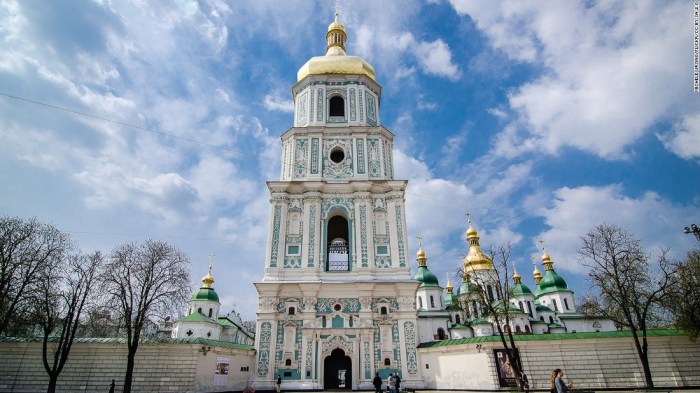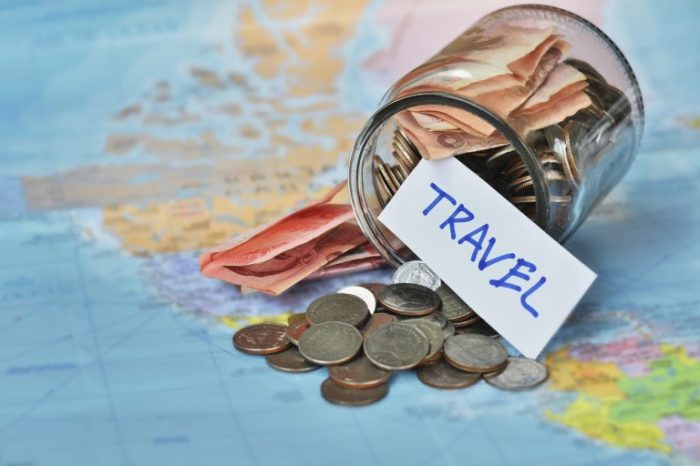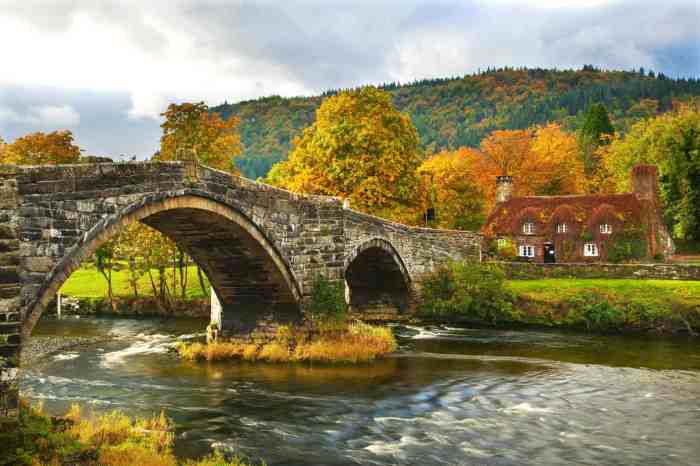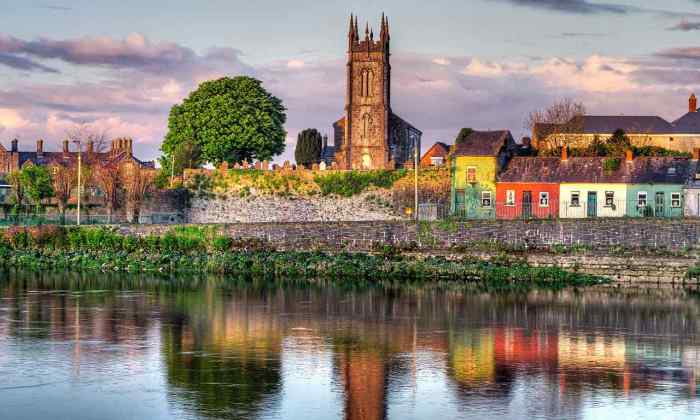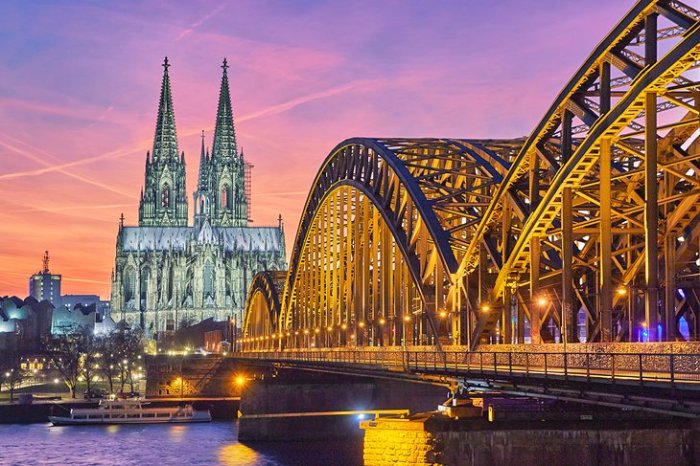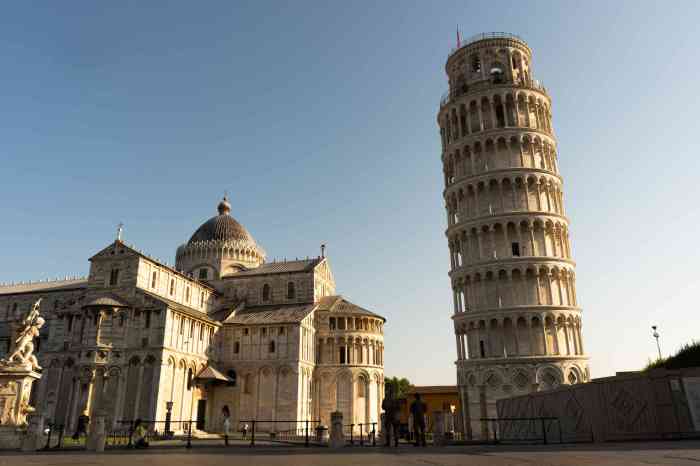Top 10 Places To Visit In Sardinia
Top 10 Places To Visit In Sardinia: Think crystal-clear waters, ancient ruins, and charming villages, all wrapped up in the warm embrace of Italian culture. Sardinia, a gem nestled in the Mediterranean Sea, is more than just a pretty island; it’s a captivating blend of history, nature, and vibrant local life.
Get ready to explore breathtaking beaches, discover hidden coves, and delve into a world of culinary delights. This is your guide to the best of Sardinia, where every corner promises a new adventure.
From the rugged mountains of Gennargentu to the sandy shores of Costa Smeralda, Sardinia boasts a landscape as diverse as its history. Imagine strolling through ancient Roman ruins, hiking through lush forests, or tasting the rich flavors of traditional Sardinian cuisine.
Whether you’re seeking relaxation, adventure, or a taste of authentic Italian life, Sardinia has something for everyone.
Sardinia: Where History Meets Paradise: Top 10 Places To Visit In Sardinia
Imagine an island where ancient ruins whisper tales of empires past, crystal-clear waters shimmer with turquoise hues, and rugged mountains stand sentinel over breathtaking coastal vistas. This is Sardinia, a captivating Italian gem nestled in the Mediterranean Sea, where history, nature, and culture intertwine in a mesmerizing tapestry.
Sardinia’s allure lies in its unique blend of influences. From the enigmatic Nuragic civilization that thrived here for millennia to the Roman and Spanish empires that left their indelible mark, the island’s history is a rich mosaic of civilizations.
This history is reflected in its diverse landscapes, ranging from the dramatic granite peaks of Gennargentu to the pristine beaches of Costa Smeralda. Sardinia also boasts a vibrant culture, where ancient traditions like the Sardinian language and folk music continue to thrive alongside modern influences.
Sardinia’s Allure for Tourists
Sardinia’s multifaceted appeal draws tourists from all corners of the globe. The island’s pristine beaches, turquoise waters, and abundant sunshine are a magnet for sun-seekers and water sports enthusiasts. Those seeking adventure can explore its rugged mountains, ancient ruins, and charming coastal towns.
Foodies are in for a treat, with Sardinia’s cuisine featuring fresh seafood, local cheeses, and hearty pasta dishes.
Coastal Gems
Sardinia’s coastline is a masterpiece, boasting a stunning array of beaches, coves, and crystal-clear waters. Whether you’re seeking sun-drenched shores, hidden coves, or adrenaline-pumping water sports, Sardinia has something for everyone. Let’s explore some of the most captivating coastal destinations.
The Emerald Coast
The Emerald Coast, named for its vibrant turquoise waters, is a must-visit. It stretches from the north of Alghero to the Gulf of Orosei. The region is renowned for its picturesque beaches and dramatic cliffs. Here are some highlights:
- La Pelosa Beach (Stintino):A crescent-shaped beach with fine white sand and shallow, crystal-clear waters. It’s often considered one of the most beautiful beaches in Sardinia, offering breathtaking views of the Asinara Island. La Pelosa is perfect for swimming, sunbathing, and snorkeling.
- Spiaggia Rosa (Budelli Island):This unique beach is famous for its pink sand, a result of microscopic red coral fragments mixed with white sand. While access to the beach is restricted to protect its delicate ecosystem, you can still admire its beauty from a distance or on boat tours.
- Cala Goloritzé (Baunei):A secluded beach with a towering limestone cliff and pristine turquoise waters. Cala Goloritzé is a popular spot for hiking and diving, with its dramatic landscape and diverse marine life.
The South Coast
The southern coast of Sardinia offers a different kind of coastal charm, with its rugged cliffs, secluded coves, and vibrant fishing villages. Here are some of the highlights:
- Chia Beach (Teulada):A long stretch of white sand with dunes and clear turquoise waters. Chia is a popular spot for windsurfing and kitesurfing, as well as for exploring the nearby lagoons and nature reserves.
- Porto Pino (Sant’Anna Arresi):Known for its picturesque lagoon and stunning beaches, including the famous Spiaggia di Tuerredda. Porto Pino is perfect for swimming, kayaking, and birdwatching.
- Porto Giunco (Villasimius):A beautiful beach with fine white sand and clear waters. It’s a popular spot for snorkeling, diving, and exploring the nearby islands.
The West Coast
The western coast of Sardinia offers a mix of sandy beaches, rocky coves, and historical sites. Here are some of the highlights:
- Spiaggia di Porto Ferro (Stintino):A long stretch of golden sand with clear turquoise waters. It’s a popular spot for swimming, sunbathing, and windsurfing.
- Spiaggia di Is Arutas (S’Arutx):A unique beach with white quartz sand that resembles small pebbles. The beach is located in a protected area and is known for its crystal-clear waters and diverse marine life.
- Spiaggia di Mari Ermi (Bosa):A beautiful beach with fine white sand and clear turquoise waters. It’s a popular spot for swimming, sunbathing, and exploring the nearby cliffs and coves.
Historical Treasures
Sardinia is not just a stunning paradise of beaches and turquoise waters, it’s also a treasure trove of history, offering glimpses into ancient civilizations and empires that once thrived on the island. Explore the island’s rich history by visiting its significant archaeological sites and ancient ruins.
You’ll be transported back in time, uncovering fascinating stories and legends associated with these historical landmarks.
The Nuragic Civilization
The Nuragic civilization, which flourished in Sardinia from the 19th to the 8th century BC, left behind an impressive legacy of stone structures known as nuraghi. These enigmatic structures, built with immense skill and precision, are scattered throughout the island, serving as a testament to the ingenuity and cultural prowess of this ancient civilization.
The nuraghi were fortified towers, often surrounded by villages, serving as defensive strongholds and homes. Their unique architecture, characterized by conical towers with a central chamber and a corbelled roof, is a defining feature of Sardinia’s cultural heritage.
Nuraghe Santu Antine
Nuraghe Santu Antine, located near the town of Torralba, is one of the most impressive and well-preserved nuraghi on the island. This complex, dating back to the 16th century BC, consists of a central tower surrounded by a series of smaller structures, including a village, a well, and a sacred area.
Nuraghe Losa
Another notable nuraghe is Nuraghe Losa, situated near the town of Abbasanta. This impressive structure, built in the 15th century BC, is characterized by its massive central tower, which rises to a height of 14 meters. The nuraghe also features a complex network of tunnels and chambers, offering a glimpse into the sophisticated engineering skills of the Nuragic people.
Roman Sardinia
After the Nuragic civilization, Sardinia became part of the Roman Empire, leaving behind a rich tapestry of archaeological remains that offer insights into Roman life and culture on the island. The Romans established important cities, built roads and aqueducts, and introduced their own architectural style.
Roman Amphitheater of Cagliari
The Roman Amphitheater of Cagliari, built in the 2nd century AD, is a testament to the Roman presence in Sardinia. This impressive structure, located in the heart of Cagliari, could accommodate thousands of spectators for gladiatorial contests and other public spectacles.
Roman Forum of Tharros
The Roman Forum of Tharros, situated on the western coast of Sardinia, is another important archaeological site. This forum, dating back to the 3rd century BC, was the heart of the Roman city of Tharros, serving as a bustling marketplace, administrative center, and social hub.
Medieval Sardinia
Following the Roman Empire, Sardinia was ruled by various powers, including the Byzantines, the Arabs, and the Pisans. This period saw the rise of new cities and fortifications, leaving behind a unique blend of architectural styles.
Medieval Castles
Sardinia is home to numerous medieval castles, which played a vital role in the island’s history. These castles, often built on strategic locations, served as defensive strongholds and symbols of power. Some notable examples include:
- Castello di Acquafredda, near the town of Oristano, a 13th-century castle with a rich history.
- Castello di Monreale, located in the town of Monreale, a well-preserved medieval castle.
- Castello di Cuglieri, situated on a hill overlooking the town of Cuglieri, a 12th-century castle with a strategic location.
Cathedral of Santa Maria Assunta
The Cathedral of Santa Maria Assunta, located in the city of Cagliari, is a masterpiece of medieval architecture. This cathedral, built in the 13th century, features a mix of Romanesque and Gothic styles, reflecting the island’s rich history and cultural influences.
Natural Wonders
Sardinia’s rugged beauty extends far beyond its captivating coastline. The island boasts a diverse landscape of soaring mountains, lush forests, and sparkling lakes, each offering a unique and unforgettable experience. These natural wonders are home to a rich array of flora and fauna, contributing to Sardinia’s rich biodiversity.
Diverse Landscapes
Sardinia’s varied topography is a testament to its geological history. The island’s central region is dominated by the rugged Gennargentu massif, Sardinia’s highest mountain range. The Gennargentu, with its granite peaks, offers breathtaking views and challenging hiking trails. The mountain range is also home to a number of unique and rare plant species, such as the Sardinian juniper and the Sardinian rockrose.
To the west of the Gennargentu lies the Campidano plain, a fertile expanse of land that is home to vineyards, olive groves, and citrus orchards. The Campidano plain is a stark contrast to the mountainous regions, providing a glimpse into Sardinia’s agricultural heritage.
The island’s coastline is dotted with numerous inlets, coves, and beaches, offering a variety of landscapes for visitors to explore. From the dramatic cliffs of the north coast to the sandy beaches of the south, Sardinia’s coastline is a sight to behold.
The coastline is also home to a number of marine reserves, where visitors can observe a variety of marine life, including dolphins, whales, and sea turtles.
Unique Flora and Fauna, Top 10 Places To Visit In Sardinia
Sardinia’s diverse landscapes support a unique and rich array of flora and fauna. The island is home to over 2,000 species of plants, many of which are endemic to Sardinia. The island’s isolation has allowed these species to evolve in unique ways, resulting in a diverse and fascinating plant life.
The Sardinian juniper, a small, slow-growing tree, is a notable example of the island’s unique flora. This species is found only in Sardinia and is a symbol of the island’s natural heritage. The island’s fauna is equally diverse, with a number of endemic species, including the Sardinian wildcat and the Sardinian mouflon.
The Sardinian wildcat, a small, elusive cat, is a symbol of the island’s wilderness. The Sardinian mouflon, a wild sheep, is found only in Sardinia and is a reminder of the island’s ancient history.
Outdoor Activities
Sardinia’s natural wonders offer a wide range of outdoor activities for visitors to enjoy. Hiking trails wind through the mountains, forests, and coastal areas, offering breathtaking views and opportunities to explore the island’s diverse landscapes. The island is also home to a number of nature reserves, including the Parco Nazionale del Golfo di Orosei e del Gennargentu, which protects the island’s unique flora and fauna.
The park is a popular destination for hiking, camping, and wildlife viewing. For those seeking a more adrenaline-pumping experience, Sardinia offers a number of adventure activities, such as rock climbing, canyoning, and mountain biking. The island’s rugged terrain provides the perfect setting for these activities, allowing visitors to test their limits and experience the island’s natural beauty from a different perspective.
Charming Towns and Villages
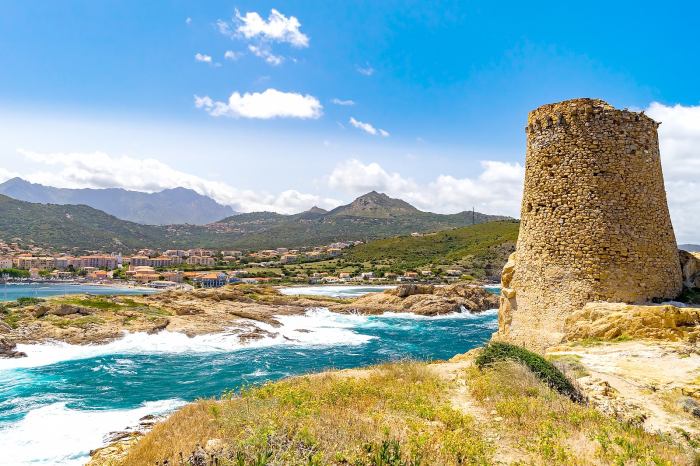
Sardinia’s charming towns and villages are a testament to the island’s rich history and culture. These picturesque destinations offer a glimpse into a bygone era, with their traditional architecture, local customs, and vibrant festivals.
Exploring the Unique Character of Sardinia’s Towns and Villages
Each town and village has its own distinct personality, shaped by its history, traditions, and local environment. From the bustling markets of Alghero to the tranquil streets of Castelsardo, there is a charming destination for every traveler. Here are some of the highlights:
Alghero: A Catalan Legacy
Alghero, a coastal town on the northwest coast, boasts a rich Catalan heritage, evident in its architecture, language, and cuisine. The town’s historic center is a maze of narrow streets lined with colorful buildings, including the 16th-century Cathedral of Santa Maria.
Alghero is also known for its coral jewelry, a craft that has been passed down for generations.
Castelsardo: A Medieval Gem
Nestled on a rocky promontory overlooking the Gulf of Asinara, Castelsardo is a medieval village with a captivating history. The town’s iconic castle, built in the 12th century, dominates the skyline and offers breathtaking views of the surrounding coastline.
Castelsardo is also famous for its handwoven baskets, a tradition that dates back centuries.
Orgosolo: A Mural Masterpiece
Orgosolo, a village in the mountainous interior of Sardinia, is renowned for its unique murals, which adorn the walls of buildings throughout the town. These murals, created by local artists, depict scenes from Sardinian history, folklore, and daily life.
Orgosolo is also known for its traditional costumes and its annual carnival celebration.
Bosa: A Riverfront Beauty
Bosa, a town situated on the Temo River, is a picturesque destination known for its colorful houses, charming bridges, and historic quarter. The town’s historic center, perched on a hill overlooking the river, is a maze of narrow streets lined with traditional buildings.
Bosa is also famous for its wine, especially the renowned Vermentino.
San Pantaleo: A Coastal Oasis
San Pantaleo, a village on the Costa Smeralda, is a tranquil destination known for its stunning natural beauty and laid-back atmosphere. The village is surrounded by lush vegetation, crystal-clear waters, and pristine beaches. San Pantaleo is also a popular destination for artists and artisans, who are drawn to its peaceful ambiance and inspiring surroundings.
Culinary Delights
Sardinia’s cuisine is a delightful journey through flavors that have been passed down for generations. From the simple yet delicious dishes of the countryside to the more elaborate seafood creations of the coast, Sardinian food reflects the island’s unique history and environment.
Traditional Sardinian Cuisine
The flavors of Sardinian cuisine are a blend of Mediterranean influences and unique local ingredients. The island’s fertile land provides an abundance of fresh produce, including vegetables, fruits, herbs, and grains. Sardinian cuisine also features a variety of meats, cheeses, and seafood, all prepared with traditional techniques and a focus on freshness.
The use of olive oil, garlic, and herbs like rosemary and oregano is prevalent, giving Sardinian dishes their characteristic aroma and taste.
Local Specialties
- Cheeses:Sardinia is famous for its cheeses, each with its own unique character. Pecorino, a sheep’s milk cheese, is a staple, and comes in various varieties, including the hard and salty Pecorino Romano and the softer, more flavorful Pecorino Sardo.
Other notable cheeses include the creamy ricotta and the flavorful Casu Marzu, a traditional cheese with live insect larvae.
- Meats:Sardinian cuisine features a variety of meats, often grilled or roasted. The most popular include pork, lamb, and goat. One of the island’s most iconic dishes is Porceddu, a suckling pig roasted over an open fire. Other specialties include Salsiccia, a flavorful sausage, and Culurgiones, a type of ravioli filled with ricotta and other ingredients.
- Seafood:Sardinia’s coastline provides a bounty of fresh seafood. The island’s cuisine features a wide variety of fish, shellfish, and crustaceans. Some of the most popular dishes include Orata al forno (baked sea bream), Spaghetti alle vongole (spaghetti with clams), and Fregula con le arselle (fregula pasta with clams).
The island is also known for its bottarga, a cured mullet roe that is a delicacy.
- Pastries:Sardinian pastries are renowned for their sweetness and richness. Popular choices include Seadas, a fried pastry filled with ricotta and sprinkled with honey, and Pardulas, a sweet ricotta and lemon zest pastry. Other specialties include Pan’e saba, a bread pudding, and Sebadas, a fried pastry filled with ricotta and sprinkled with sugar.
Cultural Significance of Food
Food plays a central role in Sardinian culture, representing tradition, family, and community. Meals are often shared with family and friends, and are a time for socializing and enjoying each other’s company. Sardinian cuisine is also a source of pride for the island’s inhabitants, who are passionate about preserving their culinary traditions.
The island’s food festivals and markets are a testament to the importance of food in Sardinian culture.
Festivals and Events
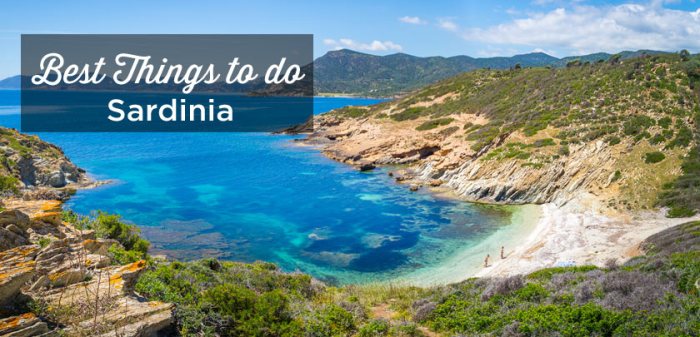
Sardinia is a land of rich traditions and vibrant culture, and its festivals and events are a testament to this heritage. Throughout the year, the island comes alive with colorful celebrations, each offering a unique glimpse into the local way of life.
These festivals are not just entertainment; they are deeply rooted in the history and identity of the Sardinian people.
Religious Festivals
Religious festivals play a significant role in Sardinian culture. They are often characterized by elaborate processions, traditional costumes, and ancient rituals.
- Feast of Sant’Efisio(Cagliari): This grand procession, held in May, honors the patron saint of Cagliari, Sant’Efisio. It involves a week-long pilgrimage from the city to the shrine of the saint in Nora, featuring thousands of participants dressed in traditional costumes, marching bands, and religious icons.
The event draws large crowds from across Sardinia and beyond, showcasing the deep devotion and cultural heritage of the region.
- Feast of the Madonna di Bonaria(Cagliari): Held in August, this festival celebrates the Virgin Mary, the patron saint of sailors. The procession features a replica of the Madonna’s statue carried through the city streets, accompanied by music and prayers. The event is a vibrant display of faith and community spirit, attracting both locals and visitors.
- Feast of San Gavino(Portoscuso): This festival, celebrated in May, honors the patron saint of the town, San Gavino. It involves a procession with a replica of the saint’s statue, accompanied by traditional music and dancing. The event is known for its colorful costumes and vibrant atmosphere, reflecting the strong religious devotion of the community.
Cultural Festivals
Sardinia’s cultural festivals offer a glimpse into the island’s rich history, music, and traditions. These events often feature local crafts, traditional music and dance, and delicious food.
- Sagra del Vermentino(Gallura): This festival, held in June, celebrates the Vermentino grape, a key ingredient in Sardinian winemaking. It features wine tastings, food stalls, live music, and cultural events, showcasing the region’s culinary heritage and agricultural traditions. The event is a popular gathering for wine enthusiasts and those interested in experiencing the local culture.
- Sagra del Carasau(Barbagia): This festival, held in October, celebrates the “carasau,” a traditional Sardinian flatbread. It features demonstrations of the bread-making process, tastings of local delicacies, and cultural performances, showcasing the region’s culinary traditions and agricultural heritage. The event is a unique opportunity to experience the authentic flavors and culture of Sardinia.
- Festival of the Nuraghe(various locations): Held throughout the year, this festival celebrates the ancient Nuragic civilization of Sardinia. It features archaeological tours, historical reenactments, and cultural performances, showcasing the island’s rich history and cultural heritage. The festival is a popular event for those interested in exploring the ancient past of Sardinia.
Accommodation Options
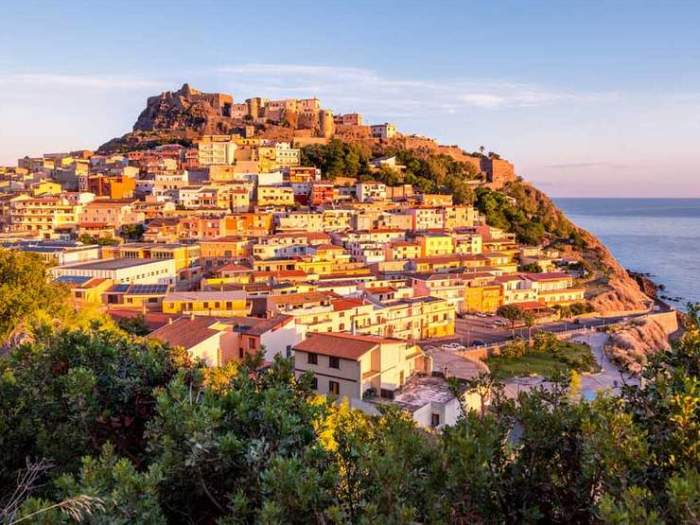
Sardinia offers a wide range of accommodation options to suit every budget and travel style. From luxurious resorts to cozy guesthouses, you’ll find the perfect place to rest your head after a day of exploring the island’s wonders.
Hotels
Hotels in Sardinia provide a variety of amenities and services, including swimming pools, restaurants, bars, and fitness centers. They are often located in popular tourist destinations, offering easy access to attractions and activities. Some hotels cater to families with children, offering kids’ clubs and other family-friendly amenities.
Others are designed for couples seeking a romantic getaway, featuring luxurious spa facilities and private balconies with stunning views.
Resorts
Resorts in Sardinia are known for their all-inclusive packages, offering guests a complete vacation experience. They typically feature multiple restaurants, bars, swimming pools, beaches, and a variety of activities like water sports, tennis, and golf. Resorts are ideal for travelers looking for a relaxing and pampered vacation.
Villas
Villas in Sardinia offer a unique and private accommodation experience. They range from charming countryside cottages to luxurious beachfront estates, providing ample space for families and groups. Villas often come equipped with kitchens, living rooms, and outdoor areas like gardens or patios, allowing guests to enjoy a more independent and self-catering vacation.
Guesthouses
Guesthouses in Sardinia provide a more intimate and personalized experience. They are often located in charming villages and towns, offering a glimpse into local life. Guesthouses typically feature a limited number of rooms, providing a warm and welcoming atmosphere. They may offer breakfast and other services, such as laundry facilities or bike rentals.
Getting Around
Sardinia’s diverse landscape and scattered attractions make choosing the right transportation method crucial for a seamless and enjoyable trip. Whether you prefer the freedom of a rental car, the convenience of public transport, or the scenic beauty of ferry travel, Sardinia offers a range of options to suit your needs and budget.
Ferries
Ferries are an excellent choice for exploring Sardinia’s coastal towns and islands. They connect the mainland to numerous destinations, including the picturesque islands of La Maddalena and Asinara.
- Pros:Ferries offer a relaxing and scenic way to travel, providing breathtaking views of the coastline. They are also a convenient way to reach islands and remote areas that may be inaccessible by road.
- Cons:Ferry schedules can be limited, especially during off-peak seasons, and journeys can be lengthy. Prices can also vary depending on the route and time of year.
Buses
Buses are a cost-effective and reliable way to travel between Sardinia’s major cities and towns. They are particularly useful for exploring the interior of the island, where train services are limited.
- Pros:Buses are a budget-friendly option, offering frequent services to various destinations. They provide a convenient way to travel between cities and towns, especially in areas with limited train connections.
- Cons:Bus travel can be time-consuming, particularly during peak season. Routes can be less frequent in remote areas, and buses may be crowded during peak hours.
Trains
Sardinia’s train network is primarily focused on connecting the island’s major cities, including Cagliari, Sassari, and Olbia. Trains offer a comfortable and scenic way to travel, providing views of the countryside.
- Pros:Trains offer a comfortable and relaxing way to travel, providing panoramic views of the island’s landscapes. They are also a convenient way to travel between major cities, offering a more direct route compared to buses.
- Cons:Sardinia’s train network is relatively limited, with fewer routes and destinations compared to other regions in Italy. Train schedules can be infrequent, and journeys can be lengthy, especially for longer distances.
Rental Cars
Rental cars provide the ultimate flexibility for exploring Sardinia at your own pace. They allow you to reach remote areas and hidden gems, making it easy to customize your itinerary.
- Pros:Rental cars offer the freedom to explore Sardinia at your own pace, allowing you to visit off-the-beaten-path destinations and create your own itinerary. They are also convenient for traveling between destinations, especially for longer distances.
- Cons:Driving in Sardinia can be challenging, especially in mountainous areas and narrow roads. Parking can be limited in popular tourist destinations, and rental car prices can be expensive, particularly during peak season.
Tips for Planning Your Trip
Sardinia, a Mediterranean gem, offers a captivating blend of history, natural beauty, and culinary delights. Planning your trip can be an exciting adventure, but it’s wise to consider a few key factors to ensure a smooth and memorable experience.
Sardinia is a gem, with crystal-clear waters, ancient ruins, and charming villages. But if you’re looking for something truly awe-inspiring, you might want to check out the Top 25 Natural Wonders Of The World list. It’s packed with mind-blowing natural landscapes, and who knows, maybe Sardinia could make the list one day! For now, though, we’ll stick to the island’s beauty and explore its top 10 spots.
Best Time to Visit
The best time to visit Sardinia depends on your preferences. The peak season is from June to September, offering warm weather and long sunny days, ideal for beach activities. However, this period also attracts a large number of tourists, resulting in higher prices and crowded beaches.
For a more relaxed and affordable experience, consider visiting during the shoulder seasons, spring (April-May) and autumn (September-October). You’ll enjoy pleasant temperatures, fewer crowds, and a more authentic atmosphere.
Visa Requirements
Sardinia is part of Italy, a member of the Schengen Area. Citizens of most European countries can enter Sardinia without a visa, as they only need a valid passport or ID card. However, if you’re from a country outside the Schengen Area, you may require a visa.
You can check the visa requirements for your specific nationality on the Italian Ministry of Foreign Affairs website or contact the Italian embassy or consulate in your country.
Packing for Your Trip
Sardinia’s diverse landscape and climate call for versatile packing. You’ll need comfortable walking shoes for exploring ancient ruins, hiking trails, and charming towns. Light, breathable clothing is essential for hot summer days, while a sweater or light jacket is recommended for evenings and cooler days.
Don’t forget your swimsuit for the stunning beaches and a hat and sunscreen for sun protection. If you plan to hike or engage in water sports, pack appropriate gear.
Sardinia’s got some seriously beautiful beaches, but if you’re looking for a different kind of European adventure, check out the Top 10 Places To Visit in The Netherlands. They’ve got windmills, canals, and some seriously cool museums. But don’t forget, Sardinia’s got its own unique charm, with ancient ruins and incredible food.
So, which adventure will you choose?
Budgeting for Your Trip
The cost of a trip to Sardinia can vary significantly depending on your travel style and preferences. Accommodation:
Hostels
€20-€40 per night
Budget hotels
€50-€100 per night
Mid-range hotels
€100-€200 per night
Luxury hotels
€200+ per nightFood:
Street food
€5-€10 per meal
Restaurants
€15-€30 per meal
Fine dining
€50+ per mealTransportation:
Local buses
€2-€5 per trip
Train
€10-€30 per trip
Car rental
€40-€80 per day
Maximizing Your Travel Experience
Sardinia offers a wealth of experiences. To maximize your time, consider creating an itinerary that includes a mix of coastal gems, historical treasures, and natural wonders.For example, you could spend a few days exploring the charming town of Alghero, renowned for its Catalan heritage and stunning coastline.
Sardinia’s got it all – pristine beaches, ancient ruins, and charming villages. It’s a place where you can spend your days soaking up the sun and your evenings exploring hidden gems. If you’re looking for a truly unique experience, you might want to check out the Top 10 Places To Visit On Earth list, but I’m pretty sure Sardinia would be a strong contender for a spot on that list.
The island is a haven for outdoor enthusiasts, foodies, and anyone who wants to escape the hustle and bustle of everyday life. So, pack your bags and get ready for an adventure!
Then, head to the rugged mountains of Gennargentu National Park, where you can hike through ancient forests and discover hidden waterfalls.To truly immerse yourself in Sardinian culture, visit a local market or attend a traditional festival. You can also explore hidden gems like the Nuragic complex of Su Nuraxi, a UNESCO World Heritage site, or the picturesque village of Castelsardo, perched on a cliff overlooking the sea.
Final Thoughts

Sardinia is more than just a destination; it’s an experience. It’s the feeling of the warm sun on your skin, the taste of fresh seafood, and the sound of laughter echoing through ancient streets. It’s a place where time slows down and you can truly reconnect with yourself and the world around you.
So, pack your bags, grab your swimsuit, and get ready to discover the magic of Sardinia. You won’t be disappointed.
Question & Answer Hub
What is the best time to visit Sardinia?
The best time to visit Sardinia depends on your preferences. For warm weather and swimming, June to September is ideal. If you prefer milder temperatures and fewer crowds, spring or fall are great options.
How do I get around Sardinia?
Sardinia has a good public transportation system, including buses and ferries. For more flexibility, consider renting a car, especially if you plan to explore the island’s more remote areas.
What are some must-try Sardinian dishes?
Some must-try Sardinian dishes include “culurgiones” (ravioli filled with ricotta and herbs), “seadas” (fried cheese pastries), and “porceddu” (roasted suckling pig).

